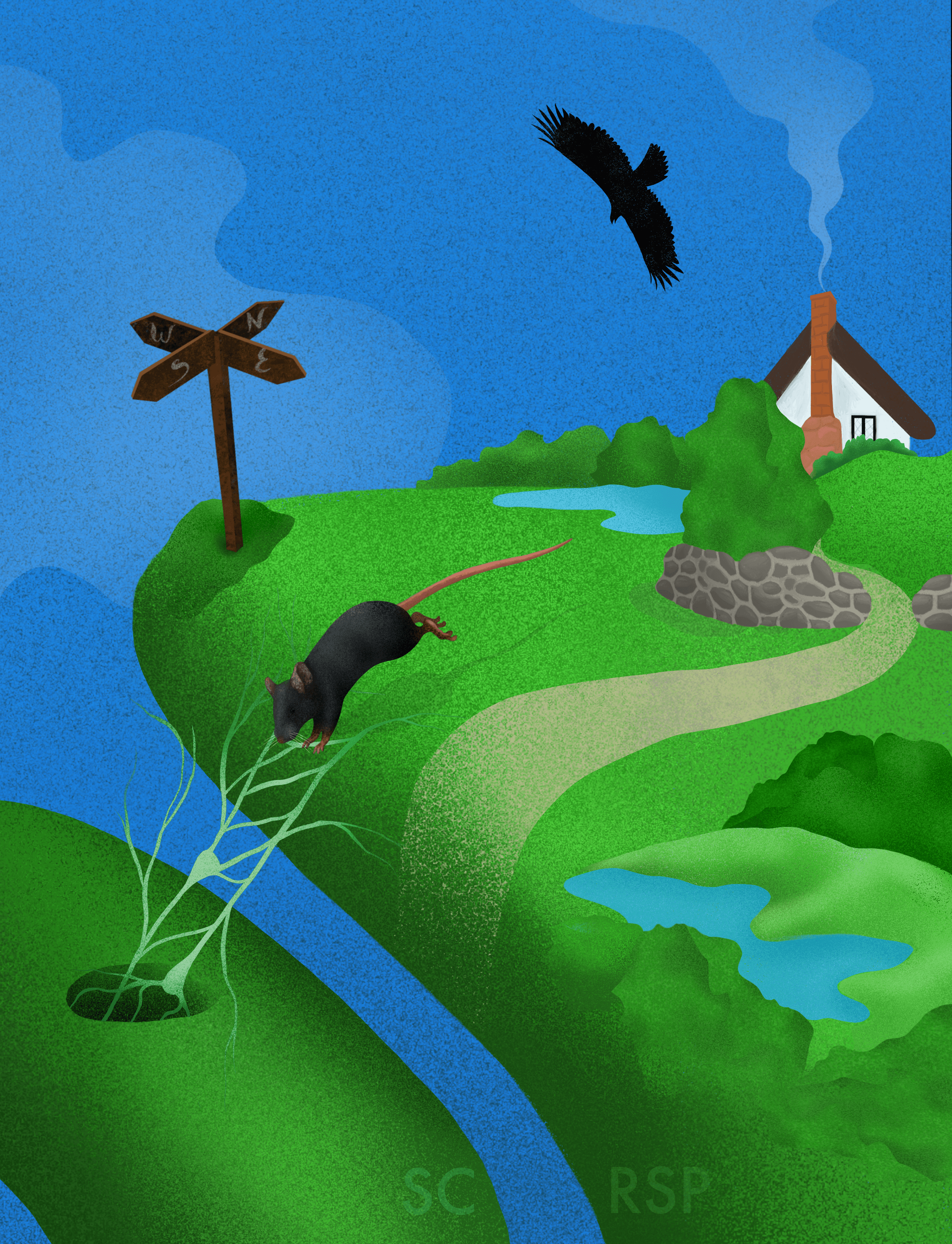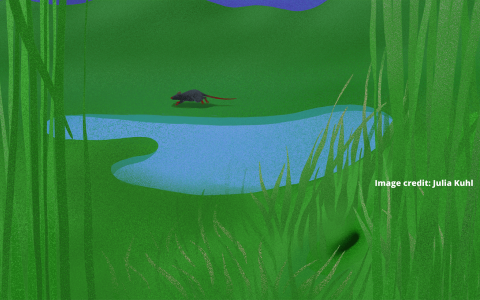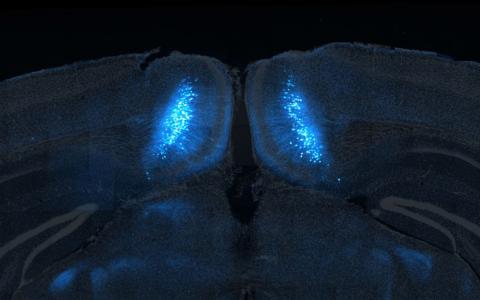
Brain circuit that converts spatial goals to escape actions discovered
Neuroscientists uncover brain mechanism that enables mice to rapidly escape to shelter location
Researchers at the Sainsbury Wellcome Centre and Gatsby Computational Neuroscience Unit at UCL have revealed a brain mechanism that mice use to instinctively escape to shelter when faced with a threat. This is the first time that neuroscientists have been able to find such a clear link between spatial goals and actions.
The study, published today in Nature, explains how mice incorporate knowledge of safe locations to execute the most efficient route to shelter. The neuroscientists found that two areas of the mouse brain, the retrosplenial cortex (RSP) and superior colliculus (SC), form a circuit that encodes the direction to a shelter. When faced with a threat, the RSP-SC circuit enables mice to accurately orient to shelter and escape to safety.

Artistic depiction of RSP-SC circuit neural representations and functions during escape behaviour. Image credit: Julia Kuhl
“If a fire alarm sounded right now, you would instinctively know how to leave the room to get to safety. This is because your brain continuously keeps track of where the exit is at all times. This happens unconsciously, you don’t have to think about it. We wanted to understand how the brain uses such important spatial information to navigate to a goal location as quickly as possible,” said Professor Tiago Branco, Group Leader at the Sainsbury Wellcome Centre and corresponding author on the paper.
From previous studies, it was known that this process is memory-based. Some people that have lesions in the RSP are still able to remember familiar locations, but they are disoriented in space and lose the ability to connect an action to a spatial goal. For example, they might know where the door is but they don’t know what actions to take to get there.
To help understand how the brain uses spatial memories to guide actions, the Branco lab used miniature electrodes, called Neuropixels probes, to simultaneously record from two regions of the mouse brain – the RSP and SC – as they were presented with a threatening sound.
“We found that the RSP is computing shelter direction and then sending this information to the SC, which uses this direction to turn the mouse’s head. When we perturbed the connection between these two regions, preventing the RSP talking to the SC, the mouse ran in a random direction when scared. This tells us that the RSP-SC circuit is a critical pathway for knowing where the shelter is and orienting to it,” explained Professor Branco.
“At a cellular level, the connection between RSP and SC is wired up in an intelligent manner that allows it to exploit the local organisation of inhibitory and excitatory SC neurons to inject the shelter memory into the SC. The result is that cortical cells generate a localised bump of activity on the SC network that is much like the needle of a compass, continuously pointing to the shelter as the mouse explores the environment. Similar circuit motifs have been observed in various organisms, from flies to fishes, perhaps suggesting a conserved blueprint for mapping direction across the animal kingdom,” commented Dr Dario Campagner, Research Fellow at the Sainsbury Wellcome Centre and Gatsby Computational Neuroscience Unit and joint first author on the paper.
To further test this finding, the neuroscientists included a second identical shelter but with a closed entrance. They found that the RSP represents both the closed and the open shelter, but the SC represents only the open one. One possible explanation is that the RSP represents lots of possible goals and the SC selects the one that is most important for the particular context, in this case the open shelter that confers safety.
“Our work shows how a rapid instinctive behaviour as anti-predatory escape can be endowed with flexibility. While the drive to escape is innate, the implementation of escape relies on a cortical spatial memory signal arriving in the SC to inform where the goal location lies. This signal maps the shelter location in egocentric space, a readily usable information format for the SC, allowing rapid implementation of orientation to shelter,” said Dr Ruben Vale, joint first author on the paper.
The next question for the researchers is to understand how the brain continuously updates important spatial information. The team hypothesise that this involves the combination of sensory and self-motion cues, such as vestibular information. To explore this further, neuroscientists in the Branco and Margrie labs at SWC are doing comparative studies in other species including Fiddler crabs that exhibit the same escape behaviour as mice but have a simpler nervous system. This will allow the researchers to look for shared principles of how the different species solve this very important problem.
This research was funded by a Wellcome Senior Research Fellowship (214352/Z/18/Z) and by the Sainsbury Wellcome Centre Core Grant from the Gatsby Charitable Foundation and Wellcome (090843/F/09/Z), MRC PhD Studentship, Boehringer Ingelheim Fonds PhD fellowship, Gatsby Unit/SWC Joint Research Fellowship in Neuroscience, UCL Wellcome 4-year PhD Programme in Neuroscience, A*STAR National Science Scholarship and the SWC PhD Programme.
Source:
Read the full paper in Nature: ‘A cortico-collicular circuit for orienting to shelter during escape’ DOI: 10.1038/s41586-022-05553-9
Media contact:
For more information or to speak to the researchers involved, please contact:
- April Cashin-Garbutt
Head of Research Communications and Engagement, Sainsbury Wellcome Centre
E: a.cashin-garbutt@ucl.ac.uk T: +44 (0)20 3108 8028
About the Sainsbury Wellcome Centre
The Sainsbury Wellcome Centre (SWC) brings together world-leading neuroscientists to generate theories about how neural circuits in the brain give rise to the fundamental processes underpinning behaviour, including perception, memory, expectation, decisions, cognition, volition and action. Funded by the Gatsby Charitable Foundation and Wellcome, SWC is located within UCL and is closely associated with the Faculties of Life Sciences and Brain Sciences.


